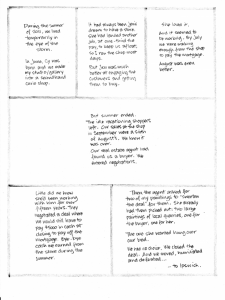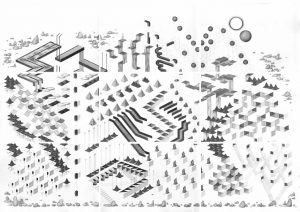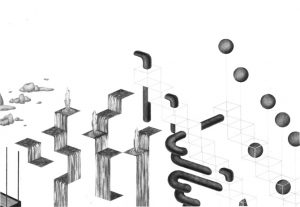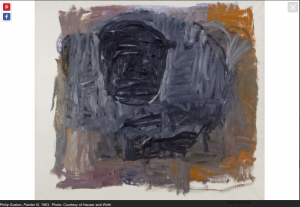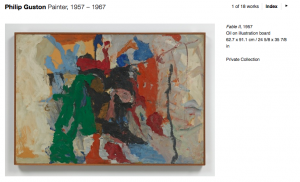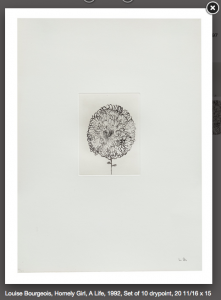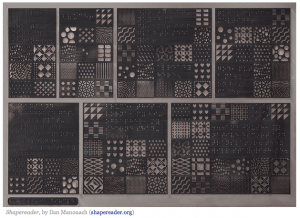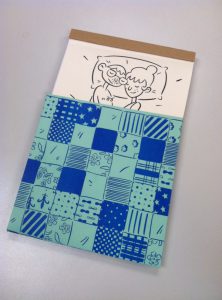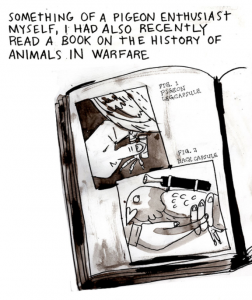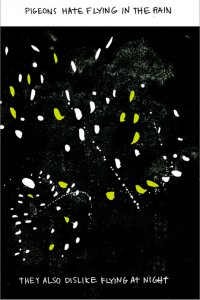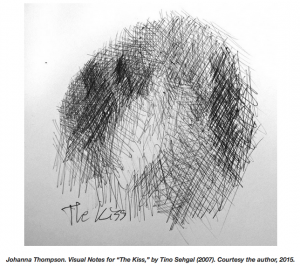Comics WorkbookJuly 27, 2017EssaysA common topic of conversation among Those Who Remember is the age of the comics medium. Was Richard Occault’s Yellow Kid really the first comic? Or does that honor belong to Rodolphe Töpffer’s goofy satires? Or does it go back even further than that? And how does the Bayeux Tapestry fit into all of this?
The answer to all of these questions is “marketing.” It was in the best interests of the New York newspapers to trumpet that the Yellow Kid was the first of its kind because they were fighting over who got to print it – it was that popular. It’s in the best interests of Francophone historians to promote a local Swiss artist who published in French back in the mid-1800s. And the Bayeux Tapestry is an outlier, lovingly handcrafted propaganda.
Honestly, any question of what “was the first comic?” must, almost by default, ask the question “what is comics?” What are the elements that must be present for something to be considered “comics”? From there, the theory goes, it’s just a matter of going through the material until you find the earliest example of something that meets those criteria.
The reality is much messier than the theory.
I am currently working my way through a copy of The Early Cartoon Strip by David Kunzle, subtitled Narrative Strips and Picture Stories in the European Broadsheet from c.1450 through 1825. (Why I just discovered the existence of a book that was published the year I was born is a mystery for the ages.)
Kunzle did a comprehensive deep dive of archives of European art and offered up a consistent definition of the comic strip:
There must be a sequence of separate images
There must be a preponderance of image over text
The medium in which the strip appears and for which it is originally intended must be reproducible, that is, in printed form, a mass medium
The sequence must tell a story which is both moral and topical
Kunzle starts the introduction to his book with what has become a cliché, but wasn’t in 1973 – the discussion of how comic strips aren’t always funny, so it’s a misnomer. They shouldn’t be called comics, but they are.
I believe that’s the underlying reasoning for the fourth criteria for what makes up comics (now and then). Because it really doesn’t make sense that the subject matter or kind of story being told has anything to do with whether something should or should not be considered a comic. You would not argue that a novel is not a novel because the story is a comedy, or vice versa – so why should a comic that had no moral or topic relevance be excluded?
Kunzle gives a decent justification that provides a filter that could narrow his search – and thus, his results. But his premise was laughable in 1973 and is laughable today. “Whether it is considered morally harmful or morally useful, progressive or reactionary, the modern comic strip has undeniably strong moral content.” Strong disagreement.
But limiting what gets labelled comics due to tone and/or intent ignores the versatility of the medium. Comics can – and should – be anything.
One of the intriguing things about Kunzle’s criteria is what’s missing – the lack of proscriptive about what kind of art is used to make the image. This ties in with criteria three – reproducible in a mass medium. Essentially, Kunzle’s research indicates that comics have been around since the introduction of the printing press in Western Europe. And, in the beginning, printing technology was so crude that there really wasn’t room to be picky about what kind of art it was to begin with – it all had to be converted to woodblocks for print anyway.
But even a cursory glance at the exhaustively cataloged marginalia by monastic manuscript copyists indicates that cartooning was a well-established skill in the centuries long before the introduction of the printing press. Some of these even look like the Bayeux Tapestry, if you squint.
The point being that cartooning and making comics are two distinct, separate skillsets. It is entirely possible to be a cartoonist without ever making comics and it is equally possible to make comics without using cartoons. Which makes this pedant grit his teeth every time someone says that they’re looking forward to seeing “all the cartoonists at SPX,” for example. This begs the question of whether the person making the statement cares about all of the rest of the comics creators in attendance or only cares about cartoonists?
I think the requirement of mass reproducibility is the most interesting and least intuitive. It suggests that a solitary page of sequential art that has no intention of ever being sent to print is not really comics. It also suggests the paradoxical concept of copies with no originals – something that seems less and less absurd to artists who have grown up making and sharing their art entirely on the internet with files that can be perfectly replicated with little or no effort. Back in the day, when Kunzle was doing his research, the idea of an entirely digital medium was barely conceived of at Xerox PARC, but was a long way from being evenly distributed.
As far as I’m concerned, the mass reproducibility requirement answers the initial question regarding the Bayeux Tapestry – it was never intended to be mass reproduced and, indeed, there was no way for it to be mass reproduced at the time of its creation. In fact, reproducing the entire Tapestry in its current medium would be a major undertaking now.
I know from experience that it’s relatively straightforward – if time-consuming – to transform the contents of the Bayeux Tapestry into an eight panel grid. (The whole thing takes up about nine pages.) But that’s not the Bayeux Tapestry, exactly, is it? It’s designed to be read as a continuous strip 70 meters in length. So any faithful reproduction of it ought to be, by rights, in the original format – even a 70-meter-long printout would be a mediated version of the original and lack authenticity.
Set aside the question of who would buy it (answer: collectors like me, who enjoy tracking down obscure works) – the real question is “who would have the wall space to display it?” Even the museum at Bayeux has to display the tapestry on three adjacent walls.
Kunzle traces the improvements in printing technology as they progress through the centuries in Europe. What’s interesting is how these advances provided greater range and detail for the artists, but that the early works are just as effective as their later counterparts. It’s also interesting to note how similar in process and effect the earliest proto-comics are to the works of Lynd Ward, for example, who produced wordless illustrated novels with one woodblock print per page. In that way, Ward has a more direct connection to the earliest works than contemporary comics creators do today.
Kunzle documents how the public’s affection for caricature in the late 18th century drove the adoption of etching over line engraving as a primary means of reproducing art. Engraving was William Hogarth’s medium and his works did a lot to define what engraving and sequential art were capable of. In some ways, caricature, a very informal art style, is a reaction to the excessive formality of Hogarth. One was stodgy and moralistic, the other was quick and simple.
Kunzle notes that the emergence of etching…invited the addition of light washes in watercolor. “Sixpence plain, one shilling colored” is a phrase not found upon prints before the advent of caricature.
Which begs the question of how Dirk Jansz van Santen became such a prominent and sought-after colorist of engraved prints a century before Hogarth.
A major difference is that van Santen did intricate piecework. He hand-illustrated entire atlases, but these were very limited editions. His work could not be mass produced the same way that the original engravings could be. His work became a value add, simply by the nature of the fact that he did them. One of the first superstar colorists, really.
By the late 18th century things had changed. JMW Turner did work coloring etchings for the local print-seller when he was a boy. Caricature required less precision to make, print, and color. Every step of the art process was much more accessible to talented (noble) amateurs instead being solely the purview of the trained working class professional infrastructure that had to grow up around the precision required from etchings.
In 1787, a younger son of a baronet named Henry Banbury created a seven foot long strip called The Long Minuet as Danced at Bath. Later that year, he produced The Propagation of a Lie, which was only six feet long. These two pieces set of a craze for strips – mostly of much shorter, easier to copy, length. The parallels with the Bayeux Tapestry are obvious, but the medium, subject matter, and technical circumstances were radically different.
Töpffer arrived towards the end of this wave of innovation and worked in a caricature style. This was mostly due to his poor eyesight, which kept him from doing the kind of detail work that he might have wanted to do. Töpffer’s innovation was not the caption with the art, nor with the strip arrangement, nor even panel borders, nor even the far more satiric subject matter. Really, Töpffer’s innovation was that he made books – several pages of sequential narrative that were themselves in sequence and had to be read together to make sense of the whole thing.
To that point, sequences were constrained to a single page, with multiple strips stacked on top of each other. Or, in the case of Hogarth, they were a series of single page prints, suitable for framing. Sometimes, as in his Before and After series, Hogarth would mount two images on the same page side by side. But if you only wanted one page from his Rake’s Progress, for example, he would sell it to you and be satisfied that you will get the moral message. The rest of the pages made a good complement, but they were not necessary as a set to get the whole story, as it were.
Töpffer’s innovation literally changed the context in which sequential art could be presented. Before it was pretty much restricted to single pages, sometimes as a collected set. It was probably inevitable that one branch of printing would collide with another, but Töpffer seems to be the first one to make that connection in a commercially viable context. Ironically, without the encouragement of Goethe, Töpffer probably would not have self-published his works – and even when he did, they were in limited print runs of no more than 500. He was widely pirated in his lifetime and the knock-offs sold far more than the originals ever did.
By 1895, when Richard Outcault’s Yellow Kid first appeared in the strip Hogan’s Alley in Joseph Pulitzer’s New York World, and later William Randolph Hearst’s New York Journal. Stylistically, The Yellow Kid was nothing new, but the technology had advanced to the point where the comic could be printed in color, which is what made The Yellow Kid distinctive, and thus, desirable. Indeed, the popularity of the character meant that he appeared in one, then the other, then both newspapers at once until 1898.
Certain American comics historians date the advent of the modern comic strip to Outcault, and they’re not wrong, just chauvinistic. Again, the emergence of better printing technology is really what is being acknowledged, not necessarily the content or the artistic style. Like I said at the beginning, it’s all marketing.
The fact that one can trace the advances in printing technology through the history of printed visual narrative is pretty impressive. Frank Santoro is clearly on to something with his ongoing interrogation of Risograph printers. Contemporary comics creators have a large variety of choices they can make with regard to their approach to mass reproduction. Unfortunately, many choose the default option, without realizing that default means there are other options.
These days, I make 16 page, 8-panel grid comics, which is not unusual. But mine are digitally printed, which is a quantum leap from old-school industrialized print-making – but digital printing suits the complex nature of my digitally-rendered artwork the best. And I make limited-edition, numbered print runs of 25, which pushes the edges of the intention of mass reproduction. There is no burning commercial demand for what I do, which makes 25 copies optimistic at best. But the limited print run calls back to the days of limited edition print sellers.
My point being that if one is going to make choices, it’s important to know what those choices signify and what benefits come with each one. Knowing the history helps with that process.
Share this page: [...]
